Countryman Isomax 2 Handleiding
Countryman
Microfoon
Isomax 2
Bekijk gratis de handleiding van Countryman Isomax 2 (2 pagina’s), behorend tot de categorie Microfoon. Deze gids werd als nuttig beoordeeld door 9 mensen en kreeg gemiddeld 5.0 sterren uit 5 reviews. Heb je een vraag over Countryman Isomax 2 of wil je andere gebruikers van dit product iets vragen? Stel een vraag
Pagina 1/2

The new I2 Instrument Microphone has been engineered from the ground up
for natural on- and off-axis frequency response, low noise, and precise polar
patterns with deep nulls. Its tiny size makes it perfect for distance miking that is
invisible in front of audiences on camera.
Complete Control: Flexible close
miking techniques are aided by
Countryman’s line of instrument
mounts, which position securely and
gently to strings, brass, and more.
Effortless Possibilities: Small size
and sonic precision makes it ideal
for X-Y, M-S, and other techniques
that rely on accurate coincident
positioning and consistent patterns.
Unparalleled Precision: The I2 maintains excellent pattern control and
frequency response at all angles, for uncolored recordings and reduced
feedback issues.
Frequency Response:
Omnidirectional: 20 Hz to 20 kHz
Directional: 50 Hz to 20 kHz
Output Impedance:
1 kHz: 130 Ohm
< 100 Hz: 250 Ohm
Sensitivity:
High Gain: -40 dBV/Pa (10 mV/Pa) at 1KHz
Low Gain: -56.5 dBV/Pa (1.5 mV/Pa) at 1 kHz
Maximum SPL:
High Gain Omni: 130 dB SPL at 1%
High Gain Directional: >> 130 dB SPL at 1%
Low Gain Omni: 150 dB SPL at 1%
Low Gain Directional: >> 150 dB SPL at 1%
Equivalent Input Noise (Pressure Mode):
High Gain: 20 dB SPL (A-Weighted)
Low Gain: 38 dB SPL (A-Weighted)
Frequency Response
20 50 100 500 1k 5k 10k 20 kHz200 2k
0
dB
+10
-20
-10
I2 OMNI
I2 CARDIOID, HYPERCARDIOID
measured at 6 inches
Polar Response
omnidirectional
300°
0°
330°
60°
30°
90°
120°
150°
240°
180°
210°
270°
dB
-10
-20
0
500 Hz
10 kHz
1 kHz
cardioid hypercardioid
300°
0°
330°
60°
30°
90°
120°
150°
240°
180°
210°
270°
300°
0°
330°
60°
30°
90°
120°
150°
240°
180°
210°
270°
dB
-10
-20
0
dB
-10
-20
0
Supplied with carrying case, windscreen, and basic clip
(also available: brass, cello, violin, flute, guitar, and stage mounts)
I2 Instrument Microphone Competitor Microphone
COUNTRYMAN ASSOCIATES INC
I2 INSTRUMENT
MICROPHONE

Countryman Associates, Inc. 195 Constitution Drive, Menlo Park, CA 94025 US: (800) 669-1422 Intl: 650-364-9988 F: (650) 364-2794
sales@countryman.com For more information and warranty registration visit www.countryman.com Made in the United States.
I2 Instrument Microphone: Frequently Asked Questions
Which pattern should I choose?
To get the best performance, know the angles where your microphone is most sensitive to sound,
and which angles offer the best rejection of unwanted sounds.
• The omnidirectional pattern picks up all sounds from all directions equally. It has the flattest
frequency response, the lowest noise level, and is the least susceptible to wind noise and
vibration. The omnidirectional microphone is often used for recording and sound reinforcement
of acoustic instruments such as percussion, guitar, saxophone, and piano.
• The cardioid pattern is most effective at picking up sound directly in front of the microphone,
and is least sensitive to sound directly behind the microphone. Overall the cardioid picks up
about 1/3 less ambient noise than the omnidirectional, so the working distance (the distance a
performer could be positioned from the microphone) is approximately 1.7 times that of the omni.
The cardioid is an excellent choice when you can position the microphone directly toward the
sound you wish to record (a lead singer, for example) and directly away from unwanted sound
sources (a crowd or loud monitor).
• The hypercardioid pattern has a narrower pick up pattern in front than the cardioid, overall
better rejection of ambient noise, and the working distance is about twice that of the omni. The
hypercardioid has a small “pick-up lobe” directly behind the microphone. This means that the
maximum rejection areas are behind and to the sides (about 60 degrees away from the rear of
the microphone on either side). The hypercardioid is the best choice when the loudest unwanted
sounds—like speakers—can be positioned in these nulls.
300°
0°
330°
60°
30°
90° 270°
300°
0°
330°
60°
30°
150°
180°
210°
cardioid
hypercardioid
300°
0°
330°
60°
30°
90°
120°
150°
240°
180°
210°
270°
omnidirectional
For mono: use double-sided foam tape
to attach an I2 Omni facing the lid of the
grand piano near the center board, or
positioned over the strings on a mic stand.
For stereo: place two I2 Cardioid mics on
edge 1/8” apart facing left and right. The
lid should always be open 3” to 6” (Closing
the lid creates a “boxy” sound.)
If the lid must be closed or removed,
place an I2 Omni on one of the
support braces near the middle
of the instrument, as shown.
Experiment with placement to avoid
resonances. For stereo try one on
the long support near the middle and
one near the upper treble section.
For upright pianos try affixing an I2 Omni
to one of the central backposts, as
shown. Experiment with placement as not
all parts of the soundboard resonate the
same. Two mikes in different areas should
yield even better results.
How can I mic a saxophone? How can I mic a violin / viola? How can I mic a cello / double bass?
The I2 Brass Instrument Mount has
vibration-damping jaws that tightly grip
the bell, with an adjustable wire that can
be positioned at the center of the bell or
placed to capture sound through the keys.
The I2 Violin Mount positions
the microphone between the
bridge and tailpiece in a secure,
vibration isolating mount. Point the
microphone toward the violin body.
The positioning arm on the I2 Cello
Mount allows for a variety of microphone
positions, including under the bridge
or over the F-hole. Make sure the silver
(active) side is pointed toward the body.
How can I mic a piano?
Product specificaties
| Merk: | Countryman |
| Categorie: | Microfoon |
| Model: | Isomax 2 |
Heb je hulp nodig?
Als je hulp nodig hebt met Countryman Isomax 2 stel dan hieronder een vraag en andere gebruikers zullen je antwoorden
Handleiding Microfoon Countryman

15 April 2023

27 Maart 2023

12 Maart 2023

1 Maart 2023

24 Februari 2023

16 Januari 2023

15 Januari 2023

14 Januari 2023

12 Januari 2023

27 Oktober 2022
Handleiding Microfoon
- Royer Labs
- GoPro
- Apogee
- Deity
- Kalley
- Citronic
- Harley Benton
- NOX
- LTC
- Niceboy
- LAMSCAT
- Dorr
- Skytec
- Cougar
- Xvive
Nieuwste handleidingen voor Microfoon

5 Augustus 2025

5 Augustus 2025
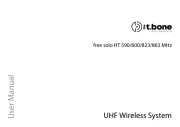
5 Augustus 2025
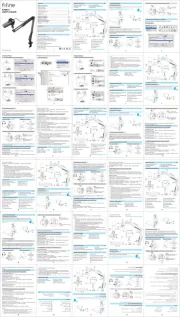
4 Augustus 2025
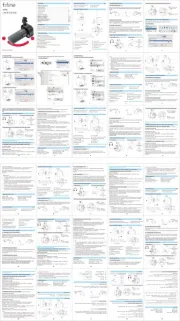
4 Augustus 2025
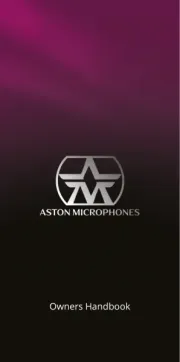
4 Augustus 2025

4 Augustus 2025

4 Augustus 2025
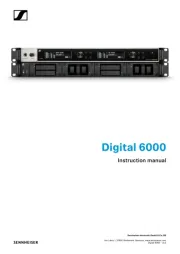
4 Augustus 2025

4 Augustus 2025